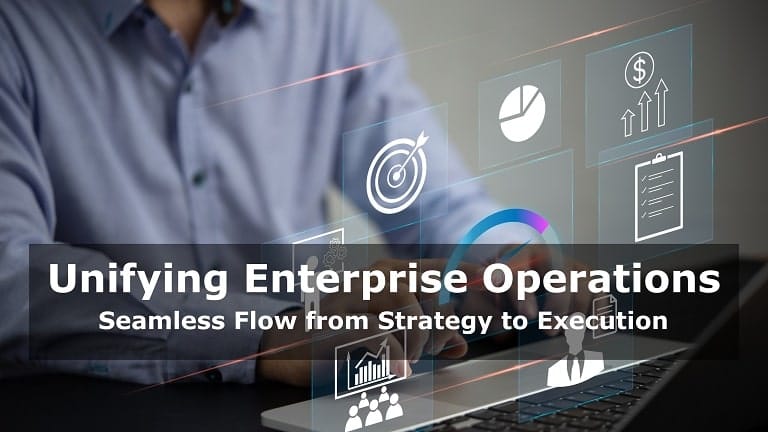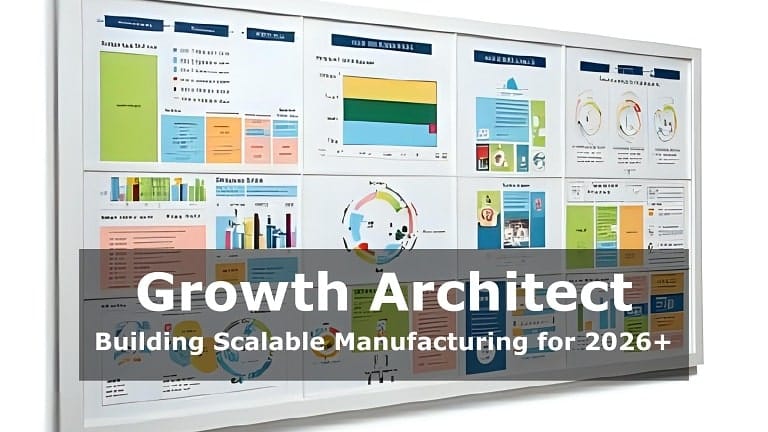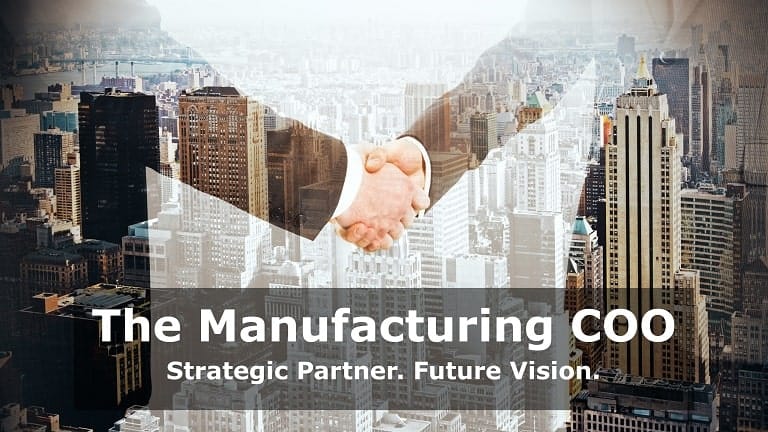- COO vs. VP of Operations: Understanding the Strategic Divide
- The COO as the CEO’s Right Hand: Vision Execution in Manufacturing
- Driving Cross-Functional Harmony: Breaking Down Silos
- Strategic Growth Through Operational Excellence
- The Intangibles: True Partnership with the CEO
- How a Chief Operating Officer Search Firm Adds Value
- Conclusion
As the manufacturing landscape continues to evolve in 2026—with automation, global supply chain shifts, and digital transformation taking center stage—companies are rethinking what they need from their leadership teams. Nowhere is this more evident than in the role of the Chief Operating Officer (COO). Once seen as the executive responsible solely for daily operations, today’s COO must be a visionary partner, capable of driving growth, aligning departments, and executing the CEO’s strategic vision.
Hiring the right COO can determine whether a manufacturing company simply survives—or scales to new heights. Yet, many organizations still confuse this role with that of the VP of Operations, leading to misaligned expectations and missed opportunities. In this article, we’ll explore the true strategic value of a manufacturing COO, the qualities that define success in this role, and why partnering with a specialized chief operating officer search firm is crucial for making the right hire.
COO vs. VP of Operations: Understanding the Strategic Divide
When organizations consider leadership roles in operations, confusion often arises between the Chief Operating Officer (COO) and the Vice President of Operations (VP of Ops). While both roles are essential to operational excellence, they serve very different purposes within a manufacturing organization—especially as we head into 2026.
Role Definitions:
VP of Operations:
The VP of Ops typically manages tactical operations—overseeing production schedules, resource allocation, and team efficiency on a daily basis. Their primary focus is ensuring that the plant runs smoothly and meets short-term KPIs like output, cost control, and quality assurance.COO (Chief Operating Officer):
The COO operates at a higher, strategic level. In manufacturing, this role extends beyond operations to include enterprise-wide alignment, ensuring departments—from supply chain and logistics to HR and finance—function cohesively toward the CEO’s long-term vision. A Manufacturing COO drives organizational growth, champions innovation, and enables cross-functional synergy.
Key Differences at a Glance:
| Role | VP of Operations | COO (Chief Operating Officer) |
|---|---|---|
| Focus | Day-to-day execution | Long-term strategy |
| Scope | Operations department | Cross-departmental |
| Reporting | Reports to COO or CEO | Reports directly to CEO |
| Goal | Efficiency & performance | Alignment & growth |
| Vision | Tactical | Strategic |
Why the Distinction Matters
When working with a chief operating officer search firm, it’s critical to define the leadership gap correctly. Companies looking for someone to “run operations” may not need a COO—but if the need is to translate vision into execution, remove departmental silos, and scale the business, then the right COO hire can be transformational.
At JRG Partners, we help manufacturing companies discern these differences, ensuring that the executive hired matches not just the job title, but the strategic need behind it.
The COO as the CEO’s Right Hand: Vision Execution in Manufacturing
In manufacturing, where operational complexity meets constant innovation, the Chief Operating Officer (COO) plays a pivotal role as the CEO’s strategic right hand. While the CEO defines the vision and overarching goals, it is the COO who brings that vision to life—on the plant floor, across logistics systems, and through people.
Turning Vision into Action
A strong COO doesn’t just manage operations—they translate the CEO’s vision into clear, measurable, and scalable strategies. This includes:
Developing operational plans aligned with long-term business objectives
Defining KPIs that reflect both current performance and future potential
Implementing systems that support continuous improvement and innovation
Whether the CEO envisions global expansion, leaner production, or tech-driven transformation, the COO turns ideas into reality with precision and purpose.
From Boardroom to Shop Floor
One of the most vital qualities of an effective Manufacturing COO is the ability to cascade strategy across all levels of the organization. That means:
Aligning plant operations with high-level corporate strategy
Ensuring supply chain and logistics are future-ready and resilient
Leading workforce transformation through upskilling and cultural alignment
The COO ensures that every department—from production to procurement—understands their role in achieving the company’s broader goals.
Bridging Strategy and Execution
Whereas the CEO may focus externally—on market forces, investors, or innovation—the COO operates internally to ensure the entire organization moves in one unified direction.
For instance, in one recent JRG Partners placement, a newly hired COO helped a mid-sized manufacturing firm reduce lead time by 30%, simply by realigning supply chain operations with the CEO’s customer-first strategy. This kind of strategic enablement is what defines a high-impact COO.
Final Thought
The right COO doesn’t just “run the business”—they amplify the CEO’s vision. That’s why partnering with a specialized chief operating officer search firm like JRG Partners ensures you find someone who is not just operationally strong, but strategically aligned with your mission.
Driving Cross-Functional Harmony: Breaking Down Silos

In today’s fast-paced manufacturing environment, isolated departments can severely limit growth and innovation. A forward-thinking Chief Operating Officer (COO) doesn’t just manage operations—they build bridges across the organization to ensure cross-functional harmony.
The Modern COO as a Systems Thinker
The most impactful COOs think beyond individual departments. They view the business as a connected ecosystem, where success in one function relies on alignment with others. Whether it’s Procurement, Supply Chain, Quality Assurance (QA), HR, or Finance, the COO ensures all teams are aligned around shared business goals.
A strategic COO will:
Connect KPIs across departments (e.g., linking supply chain efficiency to customer satisfaction metrics)
Streamline communication flows between production, HR, and compliance teams
Facilitate integrated planning cycles that combine operational targets with strategic objectives
This systems-thinking mindset not only boosts efficiency but also fosters innovation and agility.
Breaking Down Silos in Manufacturing
Traditionally, manufacturing organizations have operated in functional silos—where departments focus solely on their own outcomes. The right COO works to dismantle these barriers by:
Encouraging cross-departmental collaboration through joint planning and review processes
Implementing cross-training programs to build empathy and shared understanding among teams
Creating transparent reporting structures that encourage accountability across functions
Such efforts lead to better product quality, faster decision-making, and more resilient operations.
JRG’s Approach to Evaluating Cross-Functional Leadership
At JRG Partners, we understand that finding a COO who can foster cross-functional unity is critical. During our executive search process, we evaluate candidates not just on their operational expertise, but on their ability to:
Influence diverse teams across departments
Communicate with clarity from the shop floor to the C-suite
Demonstrate a history of aligning functional leaders toward a common goal
We dig deep into behavioral traits, leadership style, and past initiatives that reflect true cross-functional competence.
Strategic Growth Through Operational Excellence

In today’s rapidly evolving manufacturing sector, the role of the Chief Operating Officer (COO) extends far beyond optimizing daily operations. A world-class COO becomes a growth architect, using operational excellence as the foundation to scale the business, unlock new revenue streams, and lead innovation. They bridge efficiency with vision—delivering measurable progress and long-term transformation.
Identifying New Opportunities Through Operational Insight
A forward-thinking COO is constantly analyzing processes to uncover:
Revenue expansion opportunities—such as introducing high-margin product lines or entering new markets
Cost-saving innovations—like automation, predictive maintenance, and supply chain streamlining
Scalable models—ensuring operations can meet increased demand without compromising quality or profitability
By aligning operational data with strategic goals, the COO becomes instrumental in setting the pace for growth.
Leading Digital Transformation
The manufacturing COO of 2026 must champion digital initiatives such as:
Industry 4.0 integration for smart, connected production
AI-driven analytics for real-time decision-making and demand forecasting
Predictive tools to reduce downtime, improve quality, and optimize inventory
According to McKinsey, digital manufacturing strategies can boost productivity by up to 30%, highlighting the vital role COOs play in scaling smart operations.
Case in Point: Strategic Turnaround
Consider a mid-market manufacturer that partnered with JRG Partners to recruit a new COO. Within a year, the COO restructured operations, implemented ERP upgrades, and cut waste by 25%. The result? A successful product launch in a new vertical and a 40% rise in operating margin. This is operational excellence fueling strategic growth.
Long-Term Over Short-Term
Unlike short-term fixes, a strategic COO builds sustainable systems and cultures that foster continuous improvement. Their long-term mindset ensures decisions today position the company for tomorrow’s success.
At JRG Partners, we specialize in identifying COOs who don’t just run efficient operations—but drive exponential growth through them.
The Intangibles: True Partnership with the CEO

While a resume can highlight achievements in operations, supply chain, or cost reduction, what truly defines a successful Chief Operating Officer (COO)—especially in a manufacturing environment—is their ability to serve as a true strategic partner to the CEO. This level of alignment goes far beyond job responsibilities. It’s about chemistry, mutual respect, and a shared vision for the future.
What Makes a COO the “Right Fit”?
Beyond operational skills, the ideal COO possesses:
Emotional intelligence to manage complex stakeholder relationships
A complementary leadership style to the CEO (e.g., execution-focused COO for a visionary CEO)
Strong decision-making ability during uncertainty or crisis
A passion for company culture, employee engagement, and long-term success
This alignment allows the CEO and COO to function as a cohesive leadership team, capable of navigating growth, challenges, and change together.
Trust, Communication & Shared Values
The best COO-CEO partnerships thrive on:
Trust – the CEO must be able to delegate with confidence
Transparency – open, honest communication, even during tough conversations
Shared values – especially around ethics, people, and vision for the business
Without this foundation, even the most qualified COO may struggle to deliver at the level the organization requires.
Why Executive Search Must Go Beyond Credentials
These intangibles can’t be measured by resumes or interviews alone. A specialized chief operating officer search firm like JRG Partners uses behavioral insights, executive assessments, and cultural analysis to ensure a true fit. We focus not only on what a candidate has done, but on how they lead and who they are as a strategic partner.
In the end, it’s not just about hiring someone who can run the business—it’s about finding someone who can help lead it forward, right alongside the CEO.
How a Chief Operating Officer Search Firm Adds Value
Hiring a Chief Operating Officer (COO) is one of the most critical decisions a manufacturing company can make. While internal recruitment teams may successfully fill mid-level roles, the complexity of a COO search requires a far more specialized and strategic approach.
A chief operating officer search firm offers deep expertise in evaluating candidates not just for operational excellence, but for their ability to align with the CEO’s vision, lead cross-functional teams, and drive long-term growth. Unlike standard recruiters, these firms assess leadership style, cultural fit, emotional intelligence, and strategic thinking—factors often missed in a traditional resume review.
At JRG Partners, our approach is tailored for manufacturing organizations. We combine deep industry knowledge with proprietary vetting techniques to identify COOs who can lead transformation, foster collaboration across departments, and scale operations effectively.
We don’t just match resumes to job descriptions—we identify leaders who can shape the future of your business.
If you’re seeking a COO who can serve as a true partner to your CEO and fuel strategic growth, JRG Partners is your go-to executive search firm. Contact us today to begin your next transformational hire.
Conclusion
In a manufacturing environment where operational complexity meets strategic ambition, the COO serves as the glue between vision and execution. They are not just efficiency experts—but cross-functional leaders, strategic thinkers, and true partners to the CEO. From aligning teams and optimizing systems to identifying growth opportunities and fostering innovation, the right COO can profoundly shape a company’s future.
But finding such a leader requires more than a resume match. It demands a deep understanding of cultural fit, leadership chemistry, and long-term business goals. That’s where an experienced chief operating officer search firm like JRG Partners adds tremendous value—by helping you identify, assess, and secure the transformative leader your organization needs.
If you’re ready to find a transformational leader who can drive strategic growth and operational harmony, explore how our specialized manufacturing executive recruiters can help you identify and hire your next COO.


